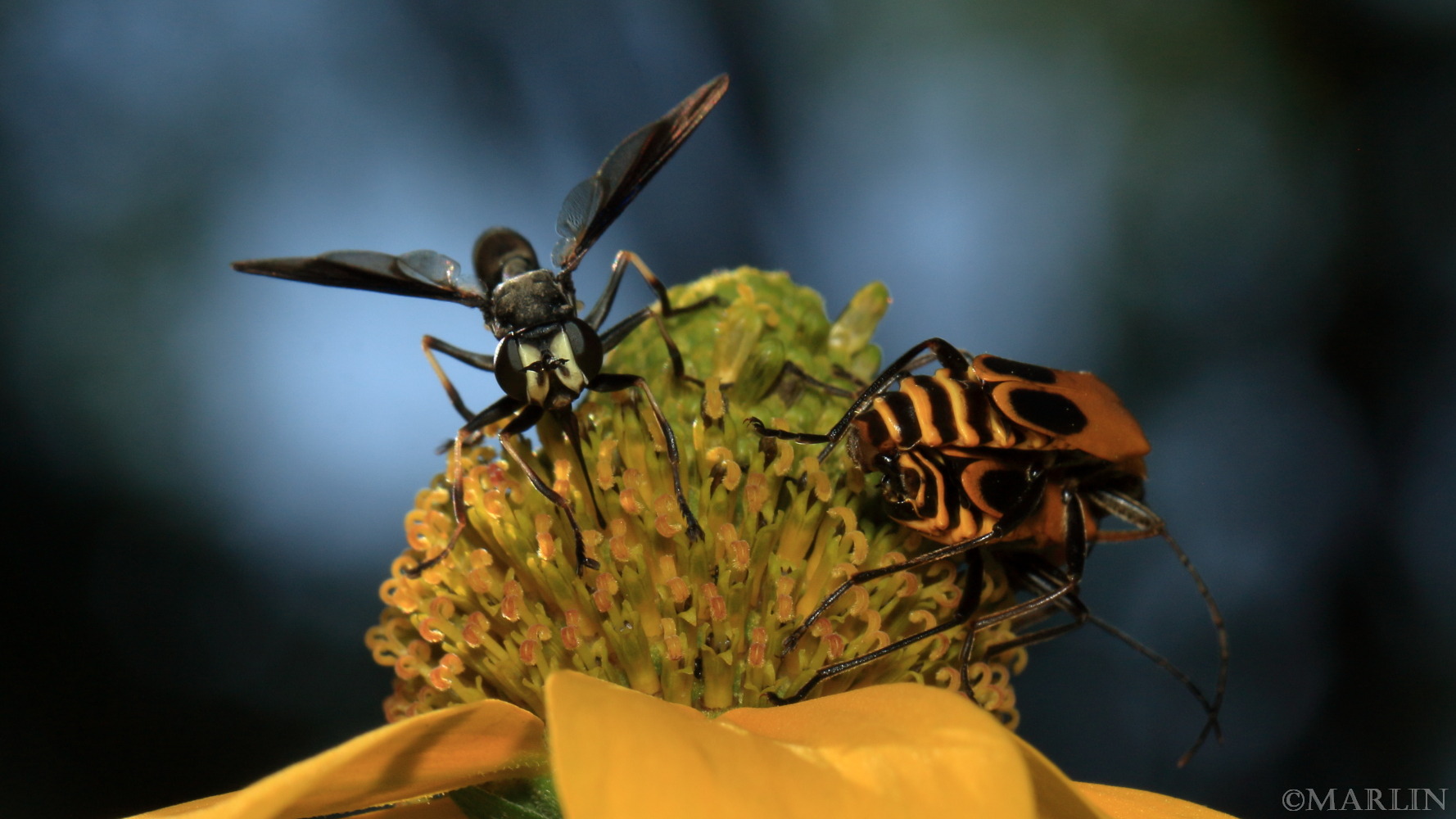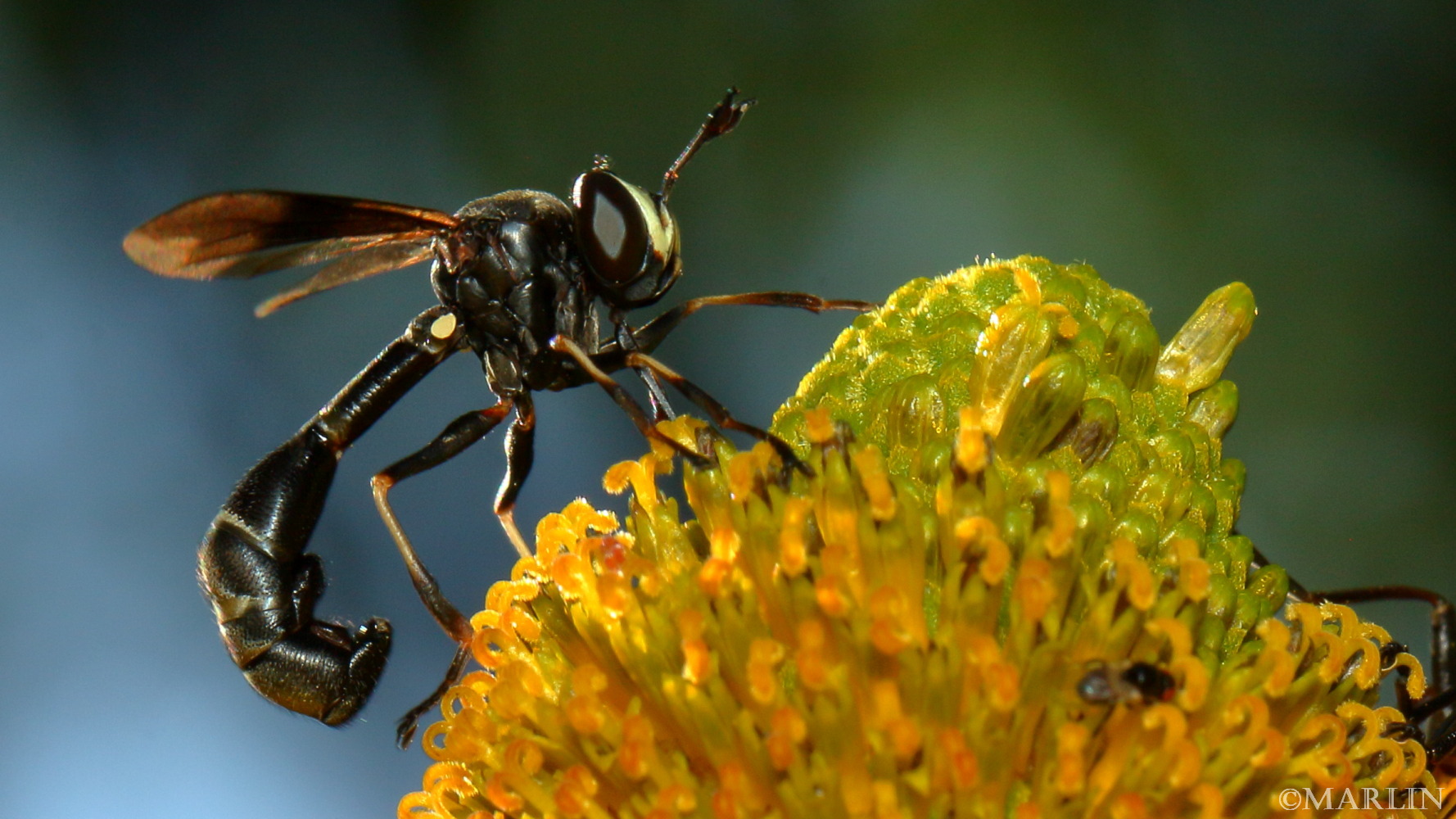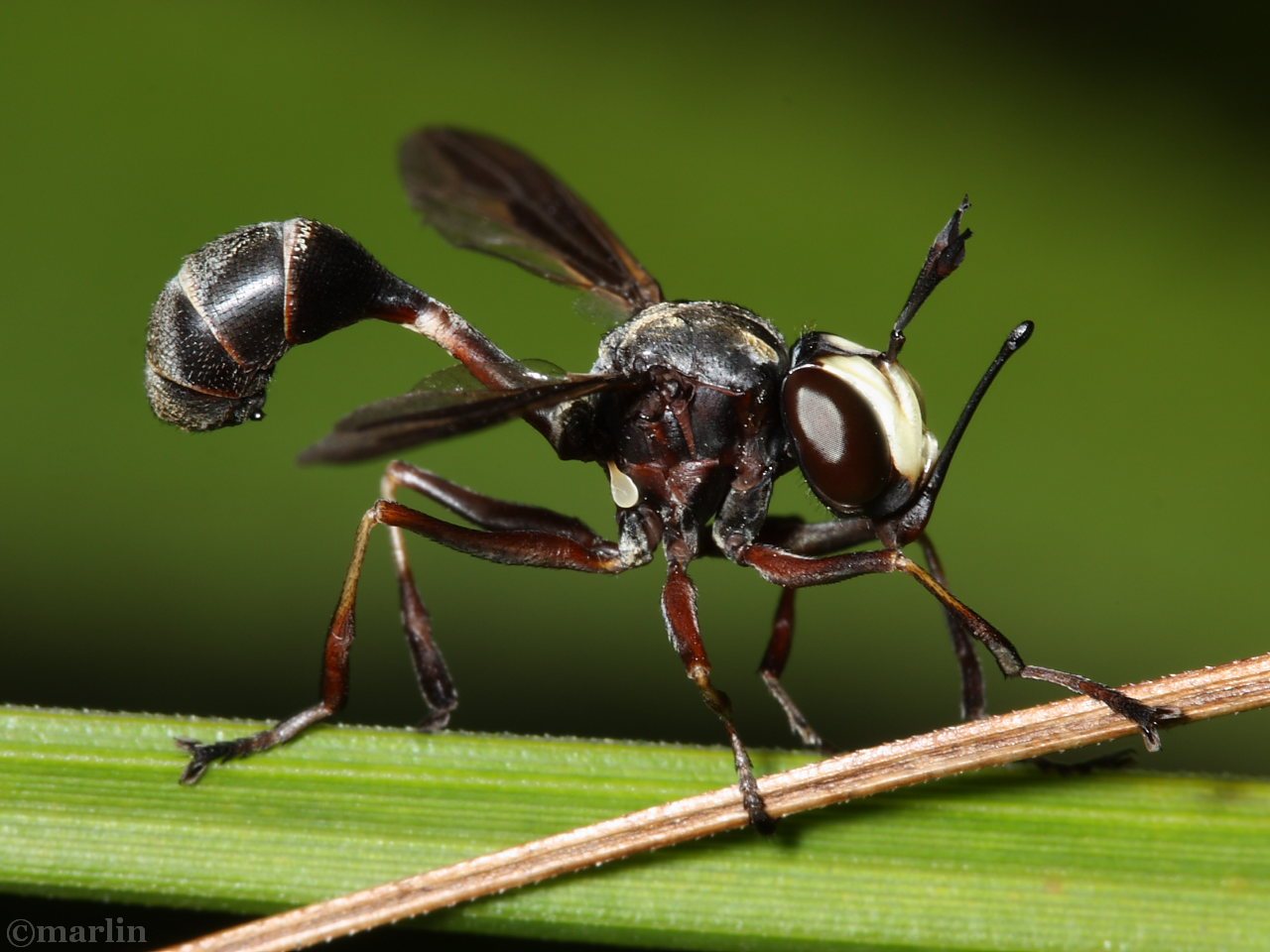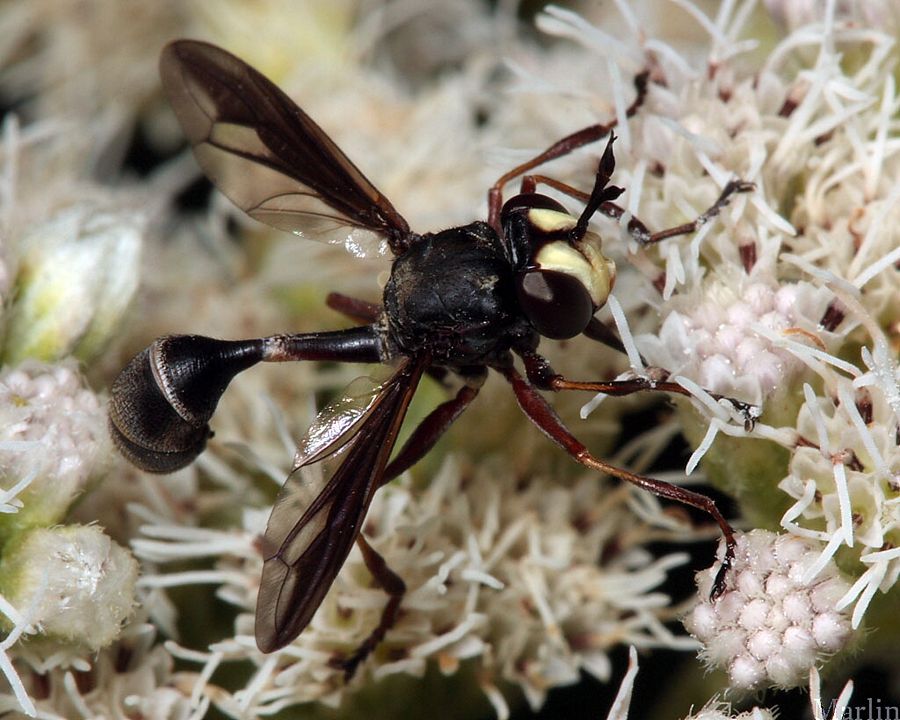Thick-Headed Fly – Physocephala furcillata
Conopids are most frequently found at flowers, feeding on nectar with their long proboscis. Conopidae is distributed in all the zoogeographic regions except for the poles and many of the Pacific islands. About 800 species are described worldwide, approximately 67 of which are found in North America.
If you’ve ever seen one of these flies, you’ll know how the word ethereal applies to its habit. The above specimen is only about 10mm – much smaller than the individual pictured below, which is about 15mm.
Live adult flies photographed in the wild at Allegheny National Forest, Pennsylvania. Size = 10-15mm
This species’ wings are colored to mimic the dark, narrow wings of the vespid wasps, especially the potter wasp (below).
The majority of conopids are black and yellow, or black and white, and often strikingly resemble wasps, bees, or flies of the family Syrphidae, themselves notable bee mimics. The larvae of all conopids are internal parasites, most of aculeate (stinging) Hymenoptera. Adults are said to alight and deposit eggs on their flying hosts.
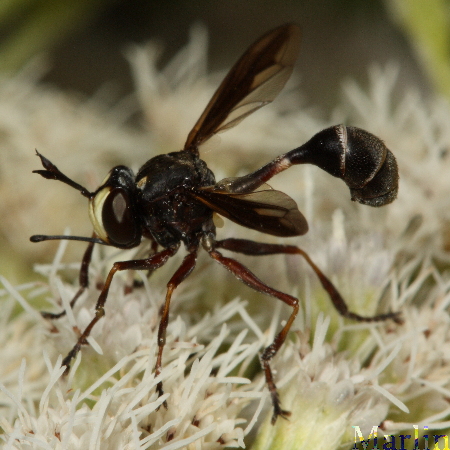 Potter wasp mimic |
Potter Wasp Eumenes sp. |
